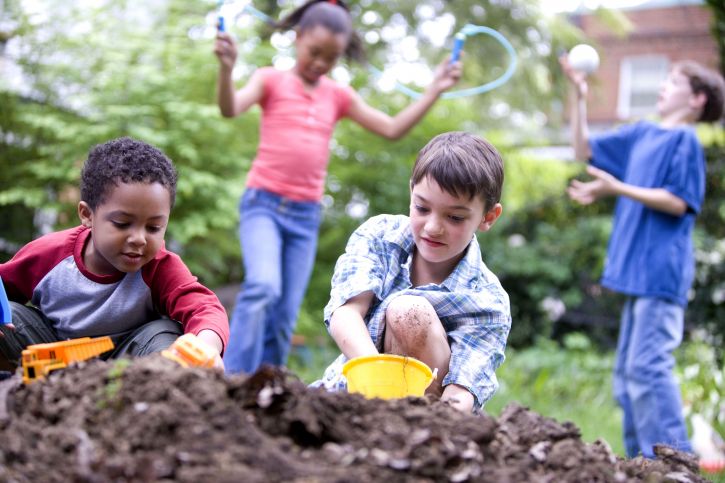We know being physically active provides numerous benefits. To name just a few, it helps us maintain a healthy weight, build stronger bones, sleep better at night, and keep a positive mental attitude. Research has shown that an active child will become an active adult. As parents or caretakers, it’s our responsibility to make sure our children become and remain physically active. Here are some tips that can help us ensure children at all ages learn and enjoy the health benefits physical activity has to offer.

- Children under the age of 2 should be given the opportunity to play and move freely. No organized or formal physical activity is needed at this age. Allow them to learn about their bodies as they explore their environment.
- Children between the ages of 3 and 5 are not too young to understand why physical activity is good for them. Share the benefits of being physically fit and focus on age appropriate skills like jumping, kicking, tossing, and catching. Structured sports tend to limit a child’s ability to explore the various ways their bodies can move as they often use only a few specific skills. This limits the child’s opportunity to learn what his body is capable of doing and can ultimately create a less well-rounded child, physically. Rules may be too complicated to understand or follow resulting in frustration, and the concept of losing may bring unnecessary disappointment. Keep physical activity fun and developmentally appropriate through the preschool years.
- Children are naturally accident-prone as they learn to play and move their bodies. To keep your kids safe, simply guide them away from participating in unsafe activities. Refrain from warning them about hurting themselves. Let them experiment and have fun without consistently telling them to “be careful”. Chances are the constant warnings and reminders will be ignored so it won’t help anyway!
- Let your children play outdoors as often a possible, but when weather does not permit mark off a place in your home that will provide the space needed to actively play. Dance, stretch to the sky, hop on one foot – any movement is better than none!
- Children lack muscular endurance so they tire quickly. The good thing is, they also recover quickly! Be sure to include rest periods and offer water and healthy snacks between periods of play.
- Use the playtime snack as an opportunity to include an extra fruit or vegetable serving into their daily diet. Did you know children are more likely to try a new food as a snack time than at mealtime?
- Remember, snacks that contain high amounts of sugar and salt are typically empty calorie foods. These foods will contain no nutritional benefit and will not help your child quickly recover from fatigue.
- Stick to serving water or milk as snack time beverages. Sugary drinks will fill your child up, but will provide no nutritional value.
- Emphasize to your children that physical activity is playful and fun. Encourage them to explore and help guide them in discovering which activities are right for them.
- Remember, children imitate what they see you do. If they see you enjoying physical activity and healthy food, they will too!
To learn about the benefits of physical activity in childhood, click here.
Source: Things to Consider when Planning for Physical Activities in Child Care
-Virginia